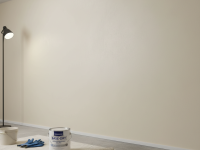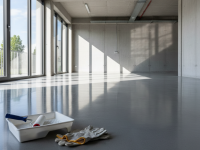Have you ever looked at that tired, old wooden chest of drawers, that faded dining table, or that scratched-up antique chair and wished you could bring it back to life? You know, make it look not just “better,” but truly stuing, like something out of a home decor magazine? Well, you’re in the right place! Refinishing wooden furniture might seem like a daunting task, something best left to seasoned professionals. But trust me, with the right knowledge, tools, and a bit of patience, you can absolutely achieve professional-grade results right in your own garage or workshop.
I’ve spent countless hours, and yes, made a few mistakes along the way, learning the nuances of wood refinishing. From stripping stubborn old varnishes to achieving that silky-smooth topcoat, every piece has taught me something new. This guide isn’t just a list of steps; it’s a compilation of those hard-won lessons, designed to walk you through the process like an expert is right there beside you, guiding your hand. We’re going to dive deep, covering everything from the essential tools you’ll need to the secret techniques that separate a good refinish from a truly great one. Get ready to transform your old treasures!
Why Refinish? Breathing New Life into Old Treasures
Before we even pick up a piece of sandpaper, let’s talk about why refinishing is such a rewarding endeavor. For me, it started with a sentimental piece – an old rocking chair from my grandparents that was in dire need of some love. Beyond sentiment, there are so many compelling reasons to refinish:
- Sustainability: In a world of fast furniture, giving an old piece a new life is an incredibly eco-friendly choice. You’re reducing waste and conserving resources.
- Cost-Effectiveness: A quality piece of solid wood furniture, even a worn one, is often cheaper to acquire (or you already own it!) and refinish than buying a brand new, lesser-quality item.
- Unique Style: Older furniture often boasts superior craftsmanship and unique designs that you simply can’t find in modern stores. Refinishing allows you to customize it to fit your personal aesthetic perfectly.
- The Joy of Creation: There’s immense satisfaction in stepping back and admiring something you’ve transformed with your own hands. It’s truly an art form!
Gather Your Arsenal: Tools and Materials You’ll Need
Success in refinishing, like in any craft, starts with having the right tools and materials. Don’t skimp here; quality supplies will make your life so much easier and yield better results. Here’s what you’ll want to have on hand:
- Safety Gear: This is non-negotiable!
- Chemical-resistant gloves
- Eye protection (safety glasses or goggles)
- Respirator mask (for fumes from strippers and dust from sanding)
- For Stripping:
- Chemical paint/finish stripper (choose a low-VOC option if possible)
- Metal scraper or putty knife (blunt edges are best to avoid gouging)
- Steel wool (coarse for stripper removal, fine for intricate details)
- Old rags or paper towels
- Plastic tarp or drop cloths
- Mineral spirits or lacquer thier (for cleaning stripper residue)
- For Sanding:
- Orbital sander (a lifesaver for flat surfaces)
- Sanding blocks (for hand sanding)
- Assorted sandpaper grits: 80, 120, 150, 180, 220, (and even 320 for topcoat prep)
- Tack cloths or a vacuum with a brush attachment
- For Staining/Finishing:
- Wood conditioner (crucial for even stain absorption)
- Wood stain (oil-based or water-based, depending on your preference)
- Polyurethane, varnish, or oil finish (e.g., tung oil, Danish oil)
- High-quality natural bristle brush (for oil-based finishes) or synthetic brush (for water-based)
- Foam brushes or lint-free rags for wiping on finishes
- Stir sticks
The Great Strip Down: Removing Old Finishes (The Right Way)
This is often the messiest but most crucial step. A clean slate is essential for any new finish to adhere properly and look its best. From my experience, don’t rush this stage – it’s the foundation of your entire project.
Chemical Stripping Method
For most pieces with thick, old finishes, chemical strippers are your best friend. Work in a well-ventilated area, preferably outdoors, and always wear your safety gear.
- Apply Generously: Brush or spread the stripper onto a small section of the furniture. Don’t be shy; you want a thick, even coat.
- Wait: Let the stripper do its magic. Follow the manufacturer’s instructions for dwell time – usually 15-30 minutes. You’ll see the old finish bubble and wrinkle.
- Scrape Off: Using your metal scraper or putty knife (with a dull edge!), gently push the softened finish off the wood. Always scrape with the grain to avoid damaging the wood. For intricate areas, use steel wool or an old toothbrush.
- Repeat if Necessary: If the finish is particularly stubborn, you might need to apply another coat of stripper to certain areas.
- Clean Residue: After scraping, wipe the wood down with mineral spirits or lacquer thier (check the stripper’s instructions for the recommended solvent) and plenty of clean rags. This removes any lingering stripper and finish particles. Allow it to dry completely.
Sanding Method (for lighter finishes or details)
Sometimes, if the existing finish is very thin or just a light varnish, you can skip the chemical stripper and go straight to sanding. This is also useful for areas where stripper might be too aggressive or hard to clean, like veneers.
- Start with a coarser grit (e.g., 80 or 100) to remove the surface finish, then gradually move to finer grits as described in the next section.
- Be very careful not to sand through veneers, which are thin layers of wood.
Sanding to Perfection: Creating a Smooth Canvas
Sanding is where you truly refine the wood. This step prepares the surface for an even stain absorption and a silky-smooth topcoat. Uneven sanding, believe me, will show through every single coat of finish.
- Start Coarse: Begin with an 80 or 100-grit sandpaper (especially if you sanded off the old finish or have minor imperfections). Use your orbital sander for flat surfaces, always keeping it moving to avoid creating divots. For curved areas and details, switch to sanding blocks or hand-sanding.
- Gradually Increase Grit: Move to 120-grit, then 150-grit, 180-grit, and finally 220-grit. The key is to thoroughly sand with each grit before moving to the next. Each finer grit removes the scratches left by the previous, coarser grit.
- Always Sand with the Grain: This is paramount. Sanding against the grain creates noticeable scratches that will be highlighted once you apply stain.
- Dust Off Between Grits: After each grit, thoroughly wipe down the furniture with a tack cloth or vacuum to remove all dust. Remaining dust will prevent the next grit from working effectively and can lead to uneven sanding.
- The “Water Test”: For a truly professional finish, after your final 220-grit sanding, lightly dampen the wood surface with a clean, damp cloth. This will raise any remaining wood fibers. Once dry, lightly sand again with 220-grit. This helps prevent a rough finish after your stain or first topcoat.
Staining or Painting? Choosing Your New Look
This is where your vision truly comes to life! Will you highlight the natural grain with a beautiful stain, or completely transform the piece with a fresh coat of paint?
Staining for Natural Beauty
If you love the look of wood grain, staining is the way to go.
- Wood Conditioner: This is a pro-tip many DIYers skip. Apply a pre-stain wood conditioner (especially on softwoods like pine or cherry) 15-30 minutes before staining. It helps the wood absorb the stain more evenly, preventing blotchiness. Trust me, it makes a huge difference!
- Apply Stain: Stir your stain well (don’t shake!). Apply it generously with a brush, foam applicator, or lint-free cloth, working in sections.
- Wipe Off Excess: After a few minutes (check the product instructions), wipe off the excess stain with a clean, lint-free cloth, moving with the grain. The longer you let it sit, the darker the stain will be. Work quickly and consistently to avoid lap marks.
- Drying Time: Allow the stain to dry completely, usually 24-48 hours, before applying a topcoat. Applying a topcoat too soon can cause cloudiness or adhesion issues.
Painting for a Bold Transformation
Painting is a fantastic option for hiding imperfections or completely changing the aesthetic.
- Primer: Always apply a good quality primer, especially if you’re going from dark to light, or if the wood is porous. Primer helps with adhesion and provides a uniform base.
- Light Sanding: After the primer dries, give it a very light sand with 220-grit sandpaper to smooth any bumps, then wipe clean with a tack cloth.
- Apply Paint: Apply thin, even coats of paint. Two or three thin coats are always better than one thick coat, as thick coats are prone to drips and uneven drying. Lightly sand between coats if desired for extra smoothness.
- Drying Time: Allow adequate drying time between coats and before applying a topcoat (if you choose to, though many paints act as their own topcoat).
The Grand Finale: Applying the Protective Topcoat
The topcoat is your furniture’s protective shield and the step that truly brings out the depth and beauty of your finish. This is where many DIYers get impatient, but patience here ensures durability and a professional look.
- Choose Your Finish:
- Polyurethane: Very durable. Oil-based is tougher and yellows slightly (great over dark stains); water-based is clearer, dries faster, and is less odorous.
- Varnish: Similar to poly but often with a more traditional look.
- Lacquer: Dries very fast and builds quickly, but often requires spraying.
- Rub-On Oil Finishes (e.g., Tung Oil, Danish Oil): Penetrates the wood, offering a more natural, hand-rubbed look. Less protective against moisture and heat, but easy to repair.
- Application:
- Brushing: For polyurethane or varnish, use a high-quality brush. Apply thin, even coats, always moving with the grain. Avoid overworking the finish, as this can create bubbles.
- Wipe-On: Many polyurethanes come in a wipe-on formula, which is very forgiving and easy to apply with a lint-free cloth. It builds slower but creates a very smooth finish.
- Spraying: For the smoothest, most professional finish, spraying is ideal, but it requires specialized equipment and a clean, dust-free environment.
- Light Sanding Between Coats: After each coat (once completely dry!), lightly sand with 220-320 grit sandpaper. This creates “tooth” for the next coat to adhere to and smooths out any dust nibs. Always wipe thoroughly with a tack cloth afterward.
- Multiple Coats: Aim for at least 2-3 coats for light-use furniture, and 3-5 coats for high-traffic pieces like dining tables.
- Curing Time: Don’t mistake “dry to the touch” for “fully cured.” Most finishes take several days to a few weeks to fully harden and reach maximum durability. Be gentle with your furniture during this time.
Pro Tips & Troubleshooting
- Work Clean: Dust is your enemy. Keep your workspace as clean as possible. A dusty environment will result in a bumpy finish.
- Temperature & Humidity: Work in moderate temperatures (65-75°F) and humidity (40-60%). Extreme conditions can affect drying times and finish quality.
- Dealing with Drips/Runs: If you spot a drip in a wet finish, gently brush it out. If it dries, you’ll need to sand it smooth and reapply the finish to that area.
- Patience is Your Best Tool: Seriously, don’t rush any step. Waiting for proper drying times and taking your time with sanding and application will pay off immensely.
- Practice Makes Perfect: If you’re nervous, try refinishing a small, less important piece first to get a feel for the process.
- Clean Your Tools: Immediately clean brushes and applicators after use. For oil-based products, use mineral spirits; for water-based, soap and water.
There you have it – your comprehensive guide to refinishing wooden furniture like a seasoned pro! It’s a journey that requires patience and attention to detail, but the reward of seeing a beloved piece of furniture reborn is truly unparalleled. You’re not just restoring wood; you’re preserving history, expressing your creativity, and creating something beautiful and unique that will last for years to come. So, go ahead, pick out that first piece, gather your supplies, and start your own furniture transformation adventure. You’ve got this!
1. A “before and after” split image of a wooden dresser. The “before” side shows a dull, scratched, and faded finish, while the “after” side displays a beautifully refinished, vibrant wooden surface with a smooth, glossy topcoat.
2. A person wearing safety glasses and gloves, actively using an orbital sander on the flat surface of a wooden table in a well-lit workshop. Dust is visibly being collected by the sander, and various grits of sandpaper are neatly arranged nearby.
3. A close-up shot of several small glass jars or swatches showcasing different wood stain colors and finishes (e.g., light oak, dark walnut, cherry, gray wash), demonstrating the variety of choices for a refinishing project.
4. An organized flat lay of essential furniture refinishing tools and materials: a variety of sandpaper grits, an orbital sander, a brush, a can of wood stain, a can of polyurethane, a tack cloth, and chemical-resistant gloves, all neatly arranged on a workbench.



